by Ike Agbor
“Facts are stubborn things; and whatever may be our wishes, our inclinations, or the dictates of our passion, they cannot alter the state of facts and evidence”. John Adam’s (1735 – 1826) argument as he defended soldiers in the Boston Massacre trials in December 1770.
In a every conceivable hamlet in Nigeria and most of Africa are men and women from the South-East who toil to make ends meet, and because of their sheer number, the press in Nigeria has continued to assert, albeit wrongly that the South-Easterners have abandoned education.
Why is that so?
Come along with me as we meander through the maze, bare the facts and bust the myth of who is in school and who is not.
We will begin by consulting JAMB, culling figures from UME admissions in the years 2002, 2003, 2004, 2005, 2006, and 2007, and then crunching the numbers and provide the statistics.
Fig.1. Total Admissions for the six year period for the six geo-political zones
It is noteworthy that the South-West lags behind among the three zones that comprise the South, and so for the purposes of this presentation, I will limit the study to the three Southern zones as the Northern zones have historically lagged behind their Southern counterparts.
Fig.2. Admissions for South-East, South-West and South-South
From the above, it can thus be established that the South-East has more of her young men and women admitted to Nigerian universities than either the South-West or the South-South; “quota” system not withstanding. The South-South has been next to the South-East in the number of university admissions in all the years except 2006 and 2007 when South-West made a nominal gain. Within the South-South, it is interesting to note that Delta State is tops, and no attempt will be made on the part of the author to divvy up the South-South for the purposes of this presentation in spite of the fact that Delta and Rivers States have more of their young men and women admitted than Kwara and Kogi put together, so no numbers will be appropriated from the South-South into South-East, in as much as in the same token no remnants of Kogi and Kwara States will be consigned into the South-West.
The South-East and the South-West have far more homogeneity within the population that occupies its geographic space due to language. It is also noteworthy that there is a presence of Ijaw in the South-West but still my subsequent comparison will be solely confined to only the South-West and the South-East.
Fig.3. Male / Female admissions in the South-East
It can be seen from the above that it was only in 2004 that the number of women surpassed the men by a miniscule number. Also note the spikes in 2003 and 2004; I am not sure whether to attribute that to the number of universities under the wing of JAMB or to some other factors. The spike is also apparent when South-East is compared to both South-West and South-South (See Fig.4). It is also noteworthy that the South-East women have continued to keep pace with their male counterparts. To make a blanket statement that the South-East has abandoned education is totally false; that there are a number of men who are gainfully employed either as artisans or traders only goes to show that the South-East population has always been underestimated.
Fig.4. South-East and South-West total admissions
It is discernible that in the years from 2002 until 2007, the South-East has continued to lead the South-West in university admissions. The South-East bested the South-West in terms of number of admissions in both genders also. As to the spikes in 2003 and 2004, my best bet would be that in the subsequent years, JAMB divested from the number of universities under its wing. (See also Fig.3.)
Fig.5. South-East and South-West admissions for males
We can glean from the above chart that there are more Southeast males in the universities than their counterparts in the Southwest. In 2005 ad 2006 the numbers essentially remained the same for each zone.
Fig.6. South-East and South-West female admissions
From the above, there are more South-East females in the universities than their SW female counterparts.
Fig.7. South-East Female and South-West Male admissions for six years
From the above, there are more S females in the universities than SW males.
Fig.8. South-East Male and South-West female admissions for six years
From the above there are more SE males in the universities than SW females
Fig.9. South-East and South-West male and female admissions for six years
From the above, among all genders, SE males lead the SE females barely, who in turn lead the SW males. The SW females are fewer in number of admissions than all others.
We can deduct from the above bar charts as follows:
From fig.1: among the six geo-political zones for six years admissions from 2002 through 2007, the SE leads followed by SS, then SW, NC, NW while NE bottomed out.
Fig.2: The SE leads the three zones in the south
Fig.3: Total male admissions in the SE is more than the female admissions for the six year period
Fig.4: SE leads SW in total admissions for six years in a row
Fig.5: SE males lead their SW counterparts in admissions for six years in row
Fig.6: SE females lead their SW counterparts in admissions for six years in a row
Fig.7: SE females lead SW males in admissions for six years in a row
Fig.8: SE males lead SW females in admissions for six years in a row
Fig.9: In all genders, SE males are tops, followed by SE females, then SW males, while S females bottomed out
In conclusion, if we add up the number of young men and women who are admitted into Nigeria universities together with the South-East men and women who are in the remotest conceivable hamlets of every state in Nigeria, and the rest in the West African sub-region and other parts of Africa, who are wrongly accused of having abandoned higher education while there South-East peers hold their own, it makes me to still demand to know how many we really are; the Nigerian state continues to spew out spurious population censuses.
Finally, if the South-East has more people in the universities when there is no reason other than that they have more candidates applying for same, it would be right and appropriately so to postulate that it in terms of population, there are more people in the South-East than either in the South-West or the South-South.
So the next time they tell you that South-East males have abandoned school, point the statistics in their face. And more poignantly ask them: O bu anyi anaghi eme ofuma; anyi oga egburu unu onwe anyi? (Aren’t we doing well already; do we commit suicide for you all?)
But wait, in the next segment when the 2006 population census will be analyzed, the reader will be in for more shocker; the 2006 population census has Oyo State as the most populated State in the South-West outside Lagos, with a population of 5,591,581, while the most populated state in the South-East is Anambra State with a total population of 4,182,032.
However in 2007 JAMB admissions, Anambra State recorded a total of 8,725 in admissions while Oyo State had 3,788….I am crunching the numbers.
Subscribe to:
Post Comments (Atom)

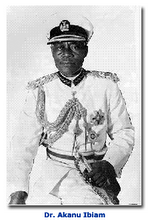
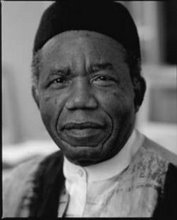
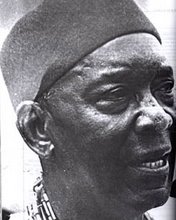

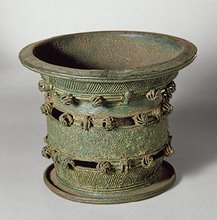

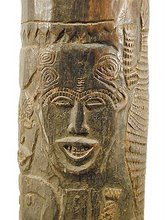

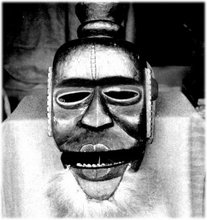

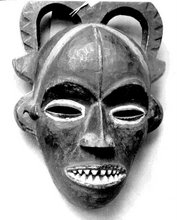
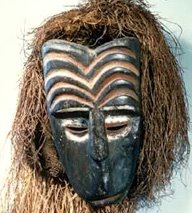
No comments:
Post a Comment